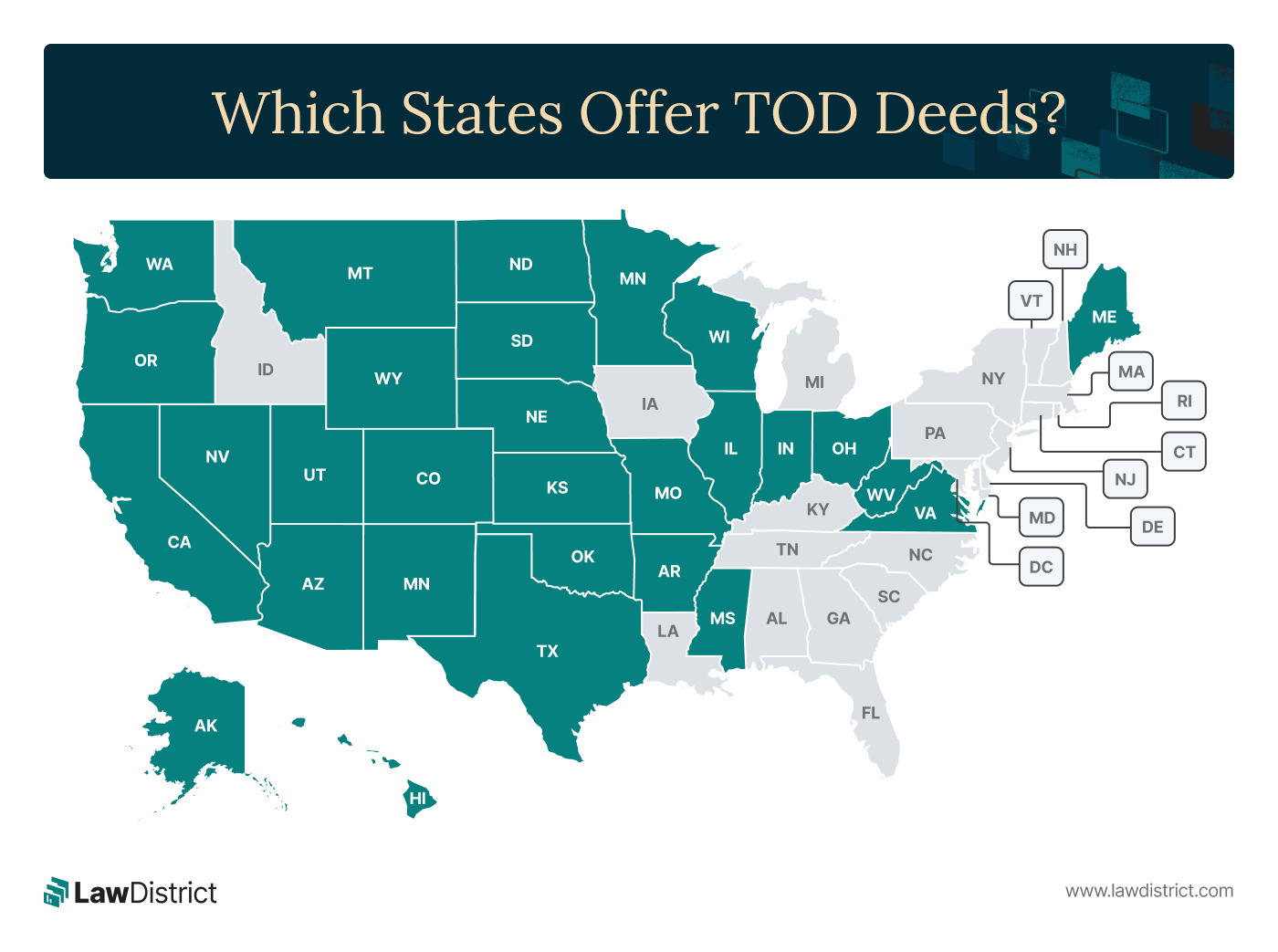Transfer on Death (TOD)
What Is Transfer on Death (TOD)?
Transfer on death (TOD) is a way for asset holders to name the beneficiaries for their stocks, bonds, deeds, or brokerage accounts. Transfer on death registration allows the owner to specify the percentage of assets each beneficiary receives after the owner's death.
A TOD beneficiary can be an individual or a charitable organization. Some states refer to a TOD as a beneficiary deed or a deed upon death.
Furthermore, TOD assets do not have to go through the often lengthy probate process. After the account owner passes away, the executor can transfer assets to the TOD beneficiary upon verification of death and identity.
How the TOD Process Works
After an account holder's death, a brokerage firm requests a death certificate, a current court letter of appointment, and other documents that serve as legal proof of death. The documents depend on factors such as whether it is a single or joint account and if it is a trust account.
With a TOD real estate deed, the owner designates one or more entities as their beneficiary. The Uniform Real Property Transfer on Death Act allows the owner of real property to designate a beneficiary to receive the property automatically without a probate procedure upon the owner's death.
The property passes by means of a recorded transfer-on-death deed. Under a TOD deed, a beneficiary has no interest in the property while the owner (grantor) is alive, and the owner can transfer property or revoke the deed at any point during their lifetime.
TOD registration documents must have accurate and complete information, including full names and signatures of appropriate individuals, such as executor, survivor, or trustee, and the date of the agreement.
A TOD deed must include the owner's name, the property address, and a detailed description of the property.
What States Are Eligible for Transfer on Death?
Not all states allow TOD deeds. However, if your real property is in a state that does not permit TOD deeds, you may be able to avoid the probate process by transferring the property to a living trust.
As of February 2024, TOD deeds are offered in 29 states and the District of Columbia. The states are shown in this map:

FAQs on TODs
-
What's the difference between TOD and POD?
The two terms are somewhat similar, but there is a significant difference. While TOD is used for investment-type assets, a payable-on-death (POD) designation is usually associated with bank accounts and certificates of deposit.
-
Is a TOD considered an inheritance?
A TOD is a tool that –like a last will and testament and an advance directive– allows individuals to make critical end-of-life decisions during their lifetimes. However, a TOD account is not a way for beneficiaries to avoid taxes. TOD beneficiaries will need to pay federal estate taxes, state inheritance taxes, and capital gains taxes on the assets after the owner's death.
What Is Transfer on Death (TOD)?
Transfer on death (TOD) is a way for asset holders to name the beneficiaries for their stocks, bonds, deeds, or brokerage accounts. Transfer on death registration allows the owner to specify the percentage of assets each beneficiary receives after the owner's death.
A TOD beneficiary can be an individual or a charitable organization. Some states refer to a TOD as a beneficiary deed or a deed upon death.
Furthermore, TOD assets do not have to go through the often lengthy probate process. After the account owner passes away, the executor can transfer assets to the TOD beneficiary upon verification of death and identity.
How the TOD Process Works
After an account holder's death, a brokerage firm requests a death certificate, a current court letter of appointment, and other documents that serve as legal proof of death. The documents depend on factors such as whether it is a single or joint account and if it is a trust account.
With a TOD real estate deed, the owner designates one or more entities as their beneficiary. The Uniform Real Property Transfer on Death Act allows the owner of real property to designate a beneficiary to receive the property automatically without a probate procedure upon the owner's death.
The property passes by means of a recorded transfer-on-death deed. Under a TOD deed, a beneficiary has no interest in the property while the owner (grantor) is alive, and the owner can transfer property or revoke the deed at any point during their lifetime.
TOD registration documents must have accurate and complete information, including full names and signatures of appropriate individuals, such as executor, survivor, or trustee, and the date of the agreement.
A TOD deed must include the owner's name, the property address, and a detailed description of the property.
What States Are Eligible for Transfer on Death?
Not all states allow TOD deeds. However, if your real property is in a state that does not permit TOD deeds, you may be able to avoid the probate process by transferring the property to a living trust.
As of February 2024, TOD deeds are offered in 29 states and the District of Columbia. The states are shown in this map:

FAQs on TODs
-
What's the difference between TOD and POD?
The two terms are somewhat similar, but there is a significant difference. While TOD is used for investment-type assets, a payable-on-death (POD) designation is usually associated with bank accounts and certificates of deposit.
-
Is a TOD considered an inheritance?
A TOD is a tool that –like a last will and testament and an advance directive– allows individuals to make critical end-of-life decisions during their lifetimes. However, a TOD account is not a way for beneficiaries to avoid taxes. TOD beneficiaries will need to pay federal estate taxes, state inheritance taxes, and capital gains taxes on the assets after the owner's death.